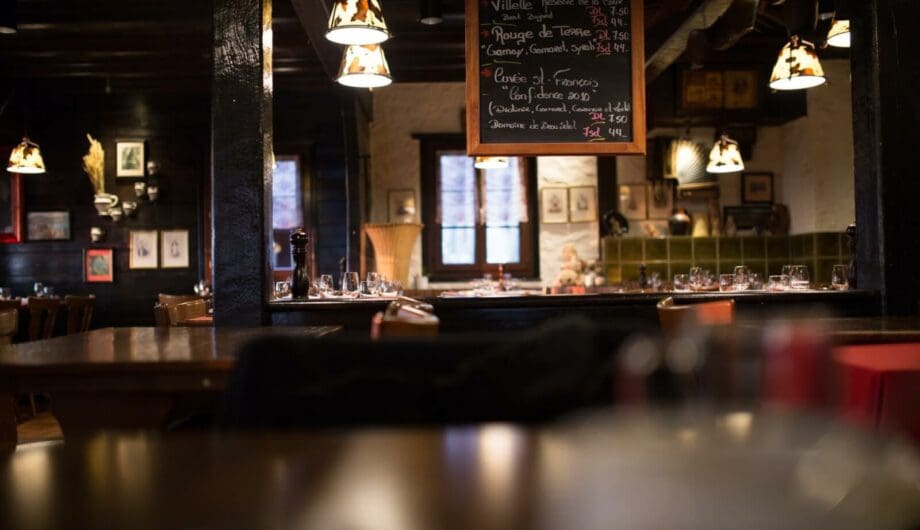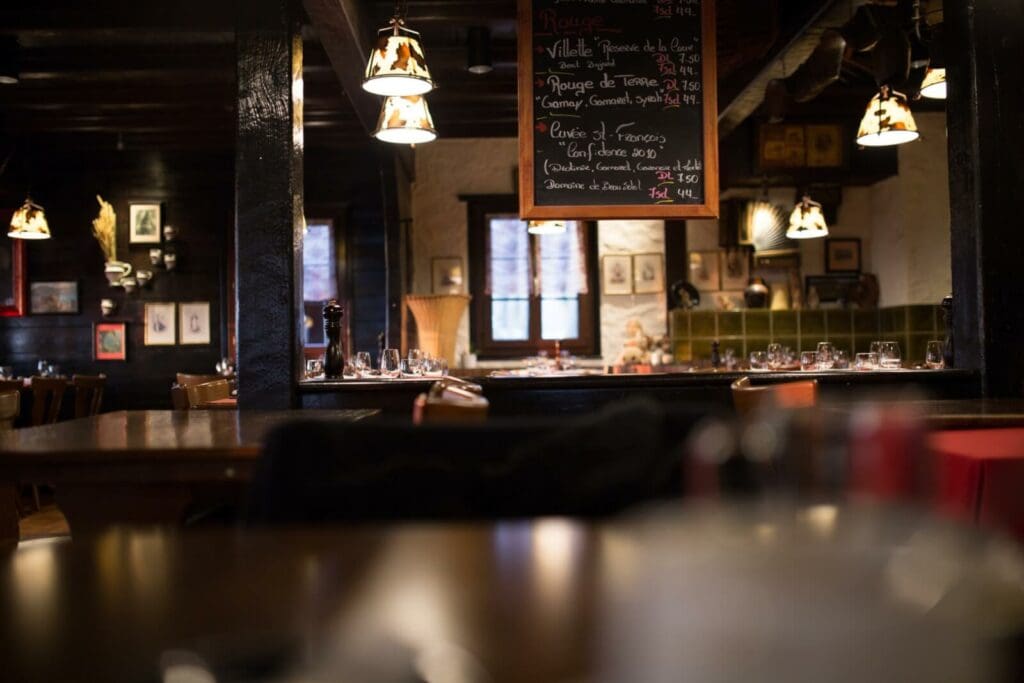
I’m writing this blog post not as a person who actually has done much restaurant website design, but as a person who has done a lot of eating at restaurants and looking at restaurant websites prior to going there. Combine that with the fact that I make websites for a living and I feel pretty qualified to give tips for restaurant owners.

Many restaurant owners look at their website as a “necessary evil.” One thing I know is, restaurant owners are very, very busy. Running a restaurant is hard work. So I really get why they put their website on the back burner.
They also don’t recognize the website as an extension of their marketing. It’s something they have to have, but not worth putting the time or effect into making a great experience for their end users. And this is a huge mistake. Guests will have questions about your restaurant before they arrive. If they land on your website and those questions aren’t answered, then they may go somewhere else. This is particularly important if you live in a tourist area where the majority of your restaurant guests are not locals and don’t know about your place. I research restaurants all the time before I go to them, and in my experience, nine times out of ten, the websites are really bad. Don’t let that be your restaurant website! Learn what you can do to make your restaurant website design stand out among your competitors.
Make sure it’s mobile-friendly
This is SO important and surprisingly missed a lot on restaurant websites. Seriously, if you are driving around in your car looking for a place to eat, you probably don’t have your laptop open. People looking for restaurant websites are much, much more likely to be looking on their phones than a lot of other industries. Your website should look great and be easy to use on everyone’s phone!
Include the menu
One of the main things people want to see when they come to your website is your menu. They want to know if you have the kind of food they want, how much it costs, and if your restaurant can accommodate their special food needs. They might be gluten free, or vegetarian, or allergic to nuts and they need to know if they can eat there. If you aren’t including that information in your website, then you are losing those customers. How many new guests to your restaurant would make it worthwhile to include this information in your website?
The biggest roadblock to this suggestion is always the restaurants that say their menu changes too much to include the menu. They don’t have time to keep updating it all the time.
In my opinion, this is even MORE of a reason to include the menu! So many restaurants keep the same old menu, year after year, and never change it up. If you are changing your menu frequently, then you should keep that updated menu on your site all the time so folks can see what new and exciting stuff you have! One of my favorite restaurants of all time (and sadly is out of business now or else I’d share a link) changed their menu every single month to have a new theme and I was always so excited to go see what new things they would have.
Keep your contact info readily available
This is true for a lot of businesses, but one thing that’s pretty important for restaurants is for folks to be able to call you. Don’t make it hard for them to find your phone number. It shouldn’t just be on the contact page, it should be on every single page. And not just in the footer, but at the top. And for goodness sake, make sure it’s clickable so if they want to call, all they have to do is click on your phone number!
Curate a newsletter and nurture it
This is a huge mistake I see when it comes to restaurant website design. No place to sign up to get coupons, find out about special events, or learn when the menu changes. “I don’t have time!” says the restaurant owner. My answer is to hire help. There are professionals out there that do newsletter management for a living and can take care of this task for you.
My example above about the restaurant that had a new theme menu every month is a prime example. If you can easily send out an email each month to your customers with the new menu, guess how many new guests you’ll have? A lot more than if they don’t know you have a new menu or they don’t know what’s on it. People are leading busier and busier lives, and they don’t always have time to find out what’s on your new menu, but if you can send them an email once a month and show them what’s there, they may be more inclined to stop in for dinner.
Additionally, if you ever host special events or parties, this is a great way to make sure all your guests know about your upcoming events. Be sure not to just have a newsletter, but make sure your website is doing everything it can to curate this list. Provide a way for folks to sign up and A REASON they should do it. What do they get if they sign up? One easy way to do that is to offer a coupon for all new subscribers. Not only does that give them incentive to sign up, but it also lets you know if it’s working because people show up with the coupon.
Showcase your events
Speaking of restaurant events, if you have special events, those go on your website too. If your restaurant often hosts guest musicians or has special theme nights, people need to know about that. I suggest having an “upcoming events” page right on your website that is updated frequently to show what’s going on so folks who are looking for something fun to do can find out that your restaurant may be the place to go.
Share info about private and semi-private events
If your restaurant has the ability to host private or semi-private events, then your website should share ALL the information about that as possible. That’s one thing that is certain, if people are looking for a place to host a party, they are going to research online.
If you have the space and ability to host their party, then make sure that you have a page on your website dedicated to that information. Here are a few things you should be sure to include on that page:
- photos of the space
- number of people the space can accommodate
- special event menus if they exist
- room minimums
- features and special accommodations such as WIFI and AV equipment
- why people should host their event with you
- how to reserve the space
Allow online reservations
Does your restaurant take reservations? If not, then you can probably ignore this paragraph but if you do, be sure to allow online reservations. It’s 2019. People want to click a button, see availability, and pick a time. Even if it’s just setting up an account with OpenTable, that’s better than not having online reservations at all.
It does take more time and cost more to have online booking for your restaurant, but in the end, it’s probably worth it. Understand that eventually, your restaurant will probably have to have this anyway so why not beat your competitors to the punch and get it done first?
There are lots of options for accepting online reservations including free WordPress plugins like Restaurant Reservations. How many new bookings would make having online reservations worth it for you?
Photos
This is an important and often overlooked part of restaurant website design. Not only do people want to see what your place looks like (inside and out), but they use these photos for a lot more. Did you know that some people look for photos online to make sure your restaurant can accommodate their disability. It lets them know how to dress, how casual or formal your restaurant is, and can help them decide if they want to visit your place.
Don’t just have one photo! You need a photo of the outside and inside of your restaurant, photos of the bar if you have one, photos of happy customers dining and of course photos of the food.
And I highly recommend investing in professional photos. Photos have a powerful effect on your website visitor, both positive and negative. They can make them want to come in or stay away. Don’t make the mistake of thinking people aren’t looking at your website and your photos. Give them something great to look at.
Running a restaurant is hard work. Don’t DIY your website and lose potential customers because you aren’t doing it right.
Amy Masson
Amy is the co-owner, developer, and website strategist for Sumy Designs. She's been making websites with WordPress since 2006 and is passionate about making sure websites are as functional as they are beautiful.
